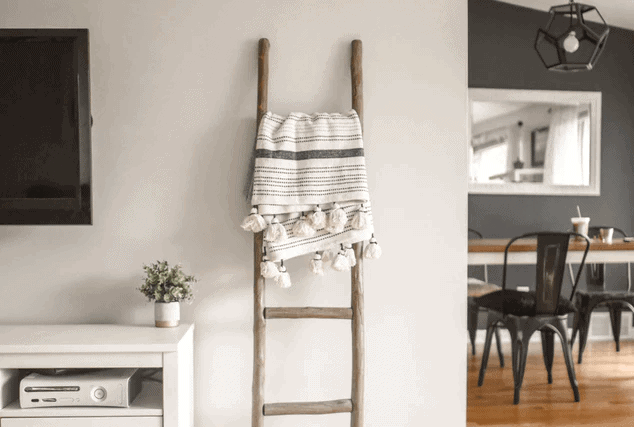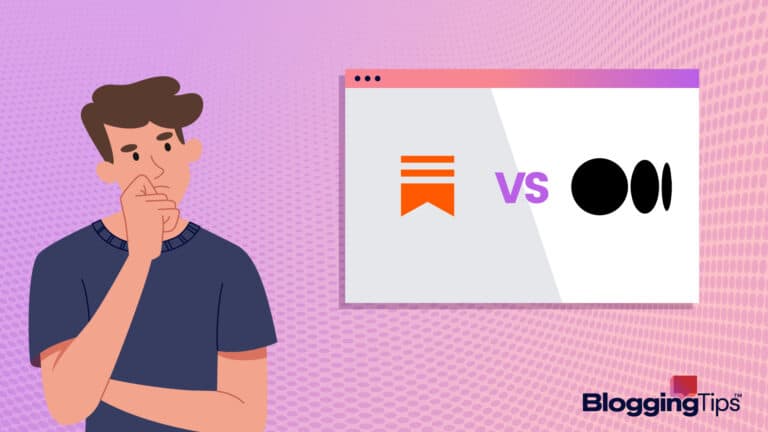Do you have a passion for DIY and home decor?
If you love to read about other people’s DIY projects and want to share your own, a DIY blog could be the perfect match for you.
Whether you want to blog as a hobby, a side hustle, or a full-time job, we’re here to help with this post on how to start a DIY blog.
The Best Reasons to Start a DIY Blog
One of the main reasons to start your own blog is to share your experiences with others.
This might be your amazing DIY projects and popular furniture hacks, or practical advice for others on how to renovate a home.
Not only will your blog become a place to share your experiences, but it can also help you to:
- Share your own unique DIY hacks and projects with others
- Inspire other homeowners to renovate their home
- Create a community around your blog and your interest in DIY
- Work with home improvement brands on collaborations
- Build your personal brand and become an influencer
- Launch products or services related to your brand
- Make money from blogging and turn it into your career
The best blogs are written by people who are passionate about the subject, so if you could talk endlessly about DIY, home decor, and home projects, then this could be the career or hobby for you.
Ready to turn your blogging dream into a reality?
Step 1: Create an Identity for Your Blog
Now that you’re all fired up about your new journey as a DIY blogger, it’s time to get to work.
One of the first steps when you start a blog is to create an identity for it.
Every blog has an identity — a name, a look and feel, and a niche.
It’s essential to think about these elements before you rush into anything, as the right identity can shape your path to success.
How to Find Your Blogging Niche
Let’s start with one of the most important aspects of your blog — its niche.
What is a blogging niche?
It’s a way to categorize or describe your blog based on its content, audience, and where it fits in with other blogs in the community (or blogosphere).
The aim is to define your blog in a way that it appeals to your target audience.
There are lots of DIY blogs out there, but there are fewer blogs specifically about DIY on a budget, or even how to renovate a tiny house.
As you get clearer on your content and audience you’ll find your niche, and immediately become more attractive to your ideal readers.
Stuck for ideas?
Here are some DIY blog niches to inspire you:
- DIY on a budget
- IKEA hacks
- Home renovation with a family
- Vintage-inspired DIY projects
- How to renovate your home in the style of a specific era
- Eco-friendly or green DIY projects
- DIY for beginners
Be inspired by your own interests and how you like to live.
If you are passionate about sustainable living and the environment, why not start a blog all about how to decorate your home with recycled materials?
You could also draw inspiration from your experiences — how to indulge your passion for craft and DIY with a young family, or share your journey of how you renovated your first home.
How to Design a Brand for Your Blog
After you’ve decided on a niche for your DIY blog, it’s time to think about how you’ll present your blog online.
A strong brand can help your blog to stand out, so take some time to craft the perfect name, and decide on your style.
Without a name you can’t buy a domain name or launch your blog, so this is the best step to tackle first.
So how do you find the right name for your DIY blog?
For some it’s easy — you may already have a name in mind, or you want to name the blog after yourself and build a personal brand.
If you don’t have a name for your blog yet, don’t worry — we can help.
You’ll find inspiration on how to come up with a blog name in our guide.
You can also be inspired by other DIY blogs, your personality, and any words or phrases you feel drawn to.
Here are some examples of home decor and DIY blogs to inspire you to name your blog:
One thing to be careful of here is to make sure that your chosen name is available.
Do a search for domain names via Bluehost and see if the .com is available.
You’ll also want to check that the name isn’t trademarked or owned by a brand, which you can do through a trademark search.
Once you’re happy that the name is available, it’s time to create a brand identity for it.
This can be really simple as you start out — a logo and a color scheme will help your readers become familiar with you, your blog, and your personality.
If you’re design savvy you could make your own logo.
If not, see if any friends or someone in your network will barter skills with you, or work with a designer on a freelance website like Fiverr or Upwork.
Step 2: Start Your DIY Blog
You’ve found the right name for your blog, decided on a niche, and are ready to follow your dreams and start your own DIY blog.
Now’s the exciting part — it’s time to get your blog online.
Buy a Domain Name
Earlier we mentioned that it’s a good idea to check that your new domain name is available.
That’s because this acts as your digital street address — the place that people visit to read your blog.
We recommend that you buy a .com domain name as it’s easy to recognize worldwide.
If you have the funds available you can also buy up other extensions of your domain name, like .co, so that others can’t register them.
There are lots of domain name providers out there, but we recommend Bluehost.
We’re fans of their service and quality, and they offer reasonable prices.
Invest in Web Hosting
It all starts to feel real from here, doesn’t it?
You now have the domain name for your blog, so it’s time to invest in web hosting so that your great DIY content can be viewed by others.
Web hosting providers offer to host your blog.
It’s similar to how you might rent a house or land — think of this as the blogging equivalent.
Your blog needs to be hosted somewhere so that readers can find and enjoy your content.
We recommend Bluehost for this as well.
They offer affordable plans with plenty of space and functionality that’s perfect for new bloggers.
If you’ve purchased your domain name elsewhere, you might want to transfer your domain name to Bluehost to make everything easier to manage.
If you don’t want to or can’t invest in web hosting at this time, why not read our guide to the best free blogging platforms in 2018?
Set Up Your Content Management System
After you’ve set up your domain name and hosting, the next step is to install a content management system, also known as a CMS.
A content management system is a platform which stores your content.
You can upload content, write blogs, create pages, and more.
Our recommended CMS for bloggers is WordPress.
It’s a free, open source content management system supported by a large community of developers and experts — so it’s easy to find help if you need it.
Bluehost offers “one click” installation which saves time and makes the process easy.
They also offer managed WordPress hosting, which includes automatic updates, which is great if you don’t want to handle the technical aspects of blogging.
For step-by-step details on install WordPress for your DIY blog, read our guide on how to start a blog.
Install a Custom Theme
While every installation of WordPress comes with a few free themes to choose from, these are quite limited and won’t help your blog to stand out from the crowd.
For a more professional, sleek, and branded look for your DIY blog we recommend you invest in a custom WordPress theme.
You can find custom and premium themes in lots of online marketplaces like Themeforest, Studiopress, and Creative Market.
The Genesis framework is designed with bloggers in mind, so it could be a great choice for your DIY blog.
With so much choice available it can take some time to find the right theme for your new blog.
Don’t be put off by this.
Enjoy the process — as DIY enthusiasts we love to express ourselves, so why not let your blog do the same?
If you feel stuck, look to other blogs in your niche for inspiration.
Look for color schemes, functionality, layouts, and design elements that are popular, and decide whether they would work well for your audience.
Step 3: Create Content for Your DIY Blog
Your blog is almost ready to be launched to the world, but first it needs some amazing content to showcase your talents.
The secret to a successful blog is consistency, so take some time to create a list of ideas for posts to wow your audience.
To publish a new blog post every week means 52 posts that you need to write for the year.
If you can get a head start on this and create a content plan, you’ll be in a great place to grow your blog.
How to Plan Content
So how do you plan content for your blog?
You could keep it simple and write down a list of blog post ideas that you’d like to publish.
You could go one step further and create an editorial calendar.
Take your list of blog post ideas and schedule them into a monthly or yearly calendar.
You could do this online or on paper — whichever works best for you.
A strong editorial calendar helps give your blog direction and allows you to create and publish engaging content more easily.
Before you launch your blog we recommend that you have at least five pieces of content ready, so that new readers can stay longer, and read more, if they enjoy your first post.
If you’re stuck for ideas on what to write about, here’s some inspiration for your new DIY blog:
- An update on your house renovation
- Before and after photo diary of a DIY hack
- Practical advice on how to learn DIY techniques
- Seasonal trends to inspire your readers
- Where to find materials for your projects
Look for inspiration in your experiences, your journey, and your personal interests, and bring them to life through your content.
It’s the blog posts that are written with heart and knowledge that are the most enjoyable to read.
Step 4: Launch Your DIY Blog
The big moment’s here — it’s time to launch your new DIY blog!
You’ve put a lot of energy, effort, and love into your blog and now is the moment that you share it with others.
As a new blogger it might feel like you don’t have much of an audience to launch to yet.
That’s completely normal and every blogger starts at zero.
Encourage your family and friends to visit your blog and share in your celebrations.
Talk about your blog launch on your social media channels, your networks and groups, and update your resume or LinkedIn profile too.
Here are some more ways to promote and grow your new DIY blog:
- Join and become active in online communities — there are some in every DIY niche on Facebook
- Share your DIY projects on Reddit
- Sign up for a Pinterest account and create boards full of interesting, relevant content
- Add your blog link to your email signature
- Design business cards and attend networking events
- Share engaging content on your social media
- Partner with a local store or college to run a DIY class or workshop
- Look for opportunities with brands in the home decor and DIY space, like Home Depot
- Comment on other DIY blogs and build relationships with fellow bloggers
- Optimize your content for blog traffic with search engine optimization (SEO)
The launch of your blog is only the start of your exciting blogging journey or career.
Remember our top tips — stay consistent, create content, and give your readers plenty of reasons to return over and over again.
For more advice on how to grow your blog and tips delivered right to your inbox, why not join our mailing list?






